Studying how Ancient Rome dealt with immigration and integration reveals a complex system designed to manage a vast and diverse population. Roman society was shaped by continuous waves of immigrants who arrived seeking refuge, economic opportunity, or political asylum. Instead of shutting out newcomers, Ancient Rome created practical policies that balanced inclusion with stability.
This approach is defined by key themes:
- Inclusive laws that allowed intermarriage and extended citizenship beyond ethnic lines
- A legal framework recognizing peregrini (non-citizens) and pathways to full Roman status
- Cultural assimilation fostering a shared Roman identity through customs and social integration
- Border policies aimed at managing migrating tribes while maintaining security
These elements combined to create a model of integration that supported Rome’s growth as a multicultural empire. Exploring these aspects provides valuable insight into the governance strategies behind one of history’s most enduring civilizations.
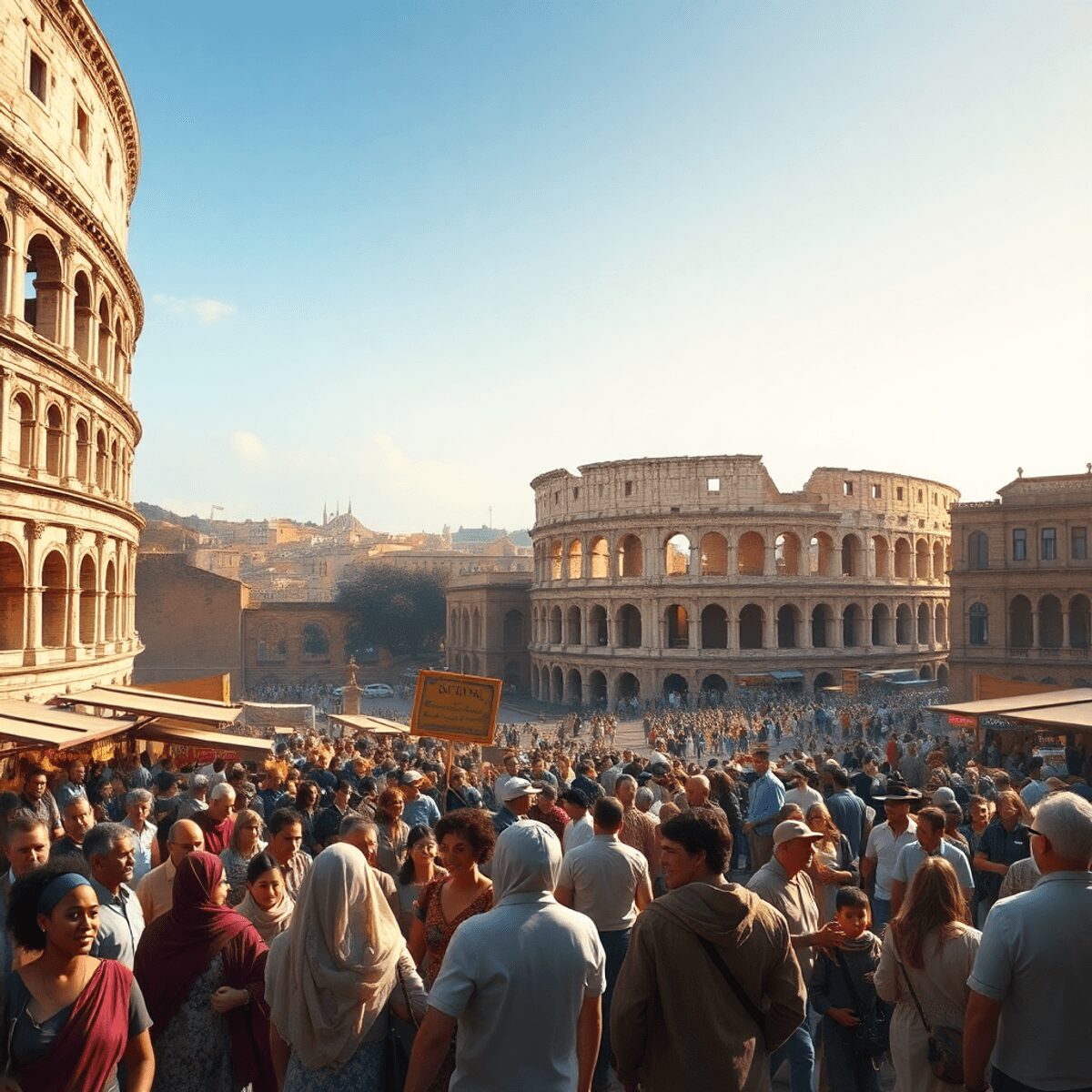
Foundations of Roman Immigration Policy
The Roman Republic was founded on principles that favored inclusion rather than exclusion. From its earliest days, Rome welcomed immigrants who sought refuge, political asylum, or economic opportunity within its growing territories. This openness helped the city-state evolve into a cosmopolitan hub at the heart of the Mediterranean.
Early Laws Promoting Inclusivity
Early immigration laws reflected this inclusivity. One notable example is the Lex Canuleia (445 BCE), which legalized intermarriage between Roman citizens and non-citizens. Before this law, marriages between these groups were prohibited, limiting social integration. By allowing conubium—the legal right to marry—between citizens and peregrini (non-citizens), Rome laid a foundation for blending different peoples and cultures. This legislation was more than just a social reform; it functioned as a tool for gradual assimilation, encouraging loyalty to Rome across diverse populations.
Shaping Citizenship Beyond Ethnicity
These early policies set a precedent that citizenship and belonging in Rome were not rigidly tied to ethnicity or birth but could be extended through legal means and social integration. This inclusive approach became a cornerstone for later Roman strategies in managing an empire composed of many ethnicities and cultures.
The willingness to absorb outsiders through laws like Lex Canuleia created a flexible framework that supported Rome’s expansion and internal cohesion over centuries.
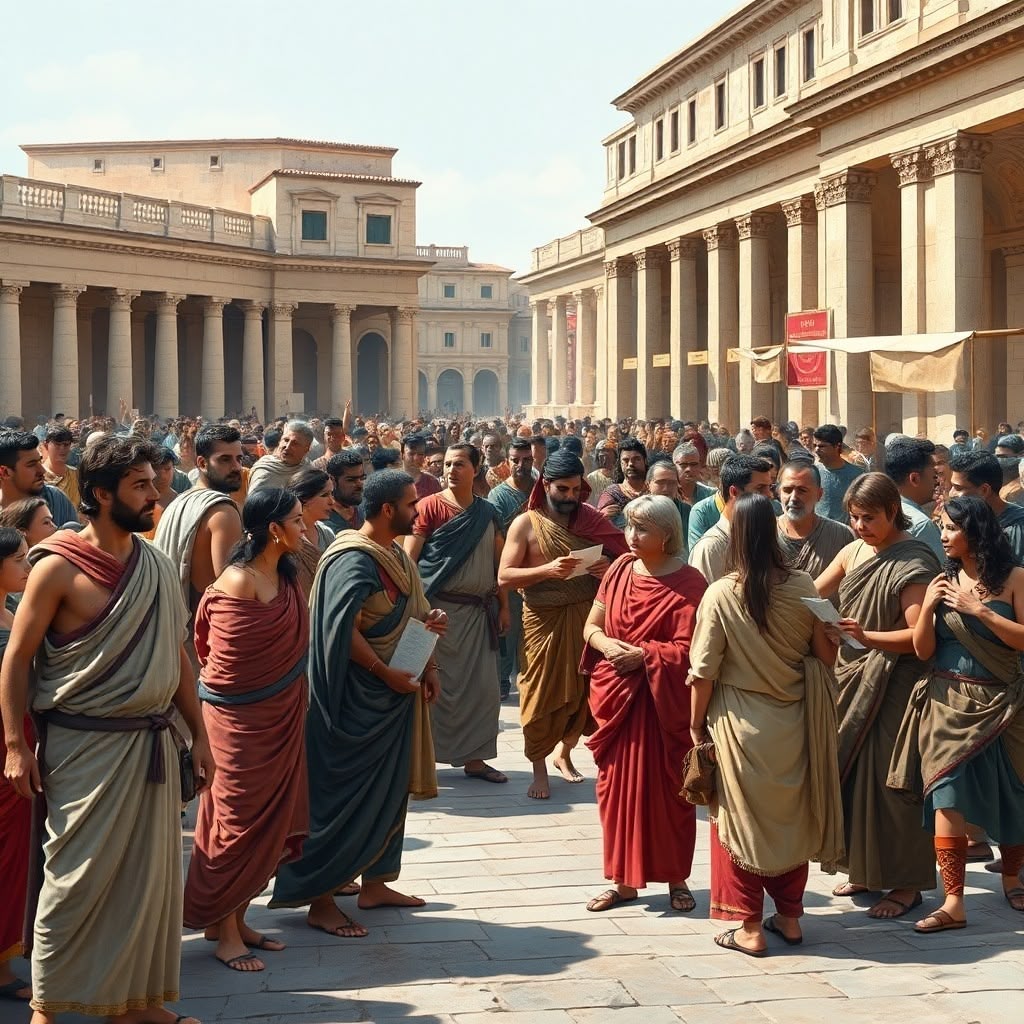
Legal Framework for Integration
Roman law made a clear distinction between citizens and peregrini—non-citizens who lived within the empire. While peregrini had certain limitations compared to citizens, such as not having full legal protections and political rights, they were still acknowledged as lawful residents. This meant that they could engage in business activities and live under the authority of Roman law.
The Purpose Behind Granting Citizenship
The main reason behind granting Roman citizenship was to achieve political unity rather than to consider someone’s ethnic background. Rome used citizenship as a means to bring together different populations and make them more connected to its governing systems. Instead of focusing on strict ethnic divisions, this approach emphasized loyalty towards the Roman state.
How Immigrants Could Become Citizens
There were several ways in which immigrants could obtain citizenship:
- Military service: Serving in the Roman legions or auxiliary forces often resulted in soldiers being granted citizenship after completing their service honorably.
- Government service: Holding positions in administration or bureaucracy could also lead to acquiring citizenship rights.
- Special grants: Emperors sometimes bestowed citizenship upon entire communities or groups as a reward for loyalty.
This system demonstrates the practical nature of Roman legal inclusion. Citizenship was not primarily concerned with maintaining cultural purity but rather focused on integrating individuals into Rome’s political structure. By allowing non-citizens to attain full legal status through acts of service and displays of loyalty, Rome incentivized immigrants to actively participate in ensuring the empire’s stability and growth.
The concept of peregrini is further explored in the context of legal identity and citizenship in the later Roman Empire, offering valuable insights into how these concepts evolved over time. For a deeper understanding, refer to this study.
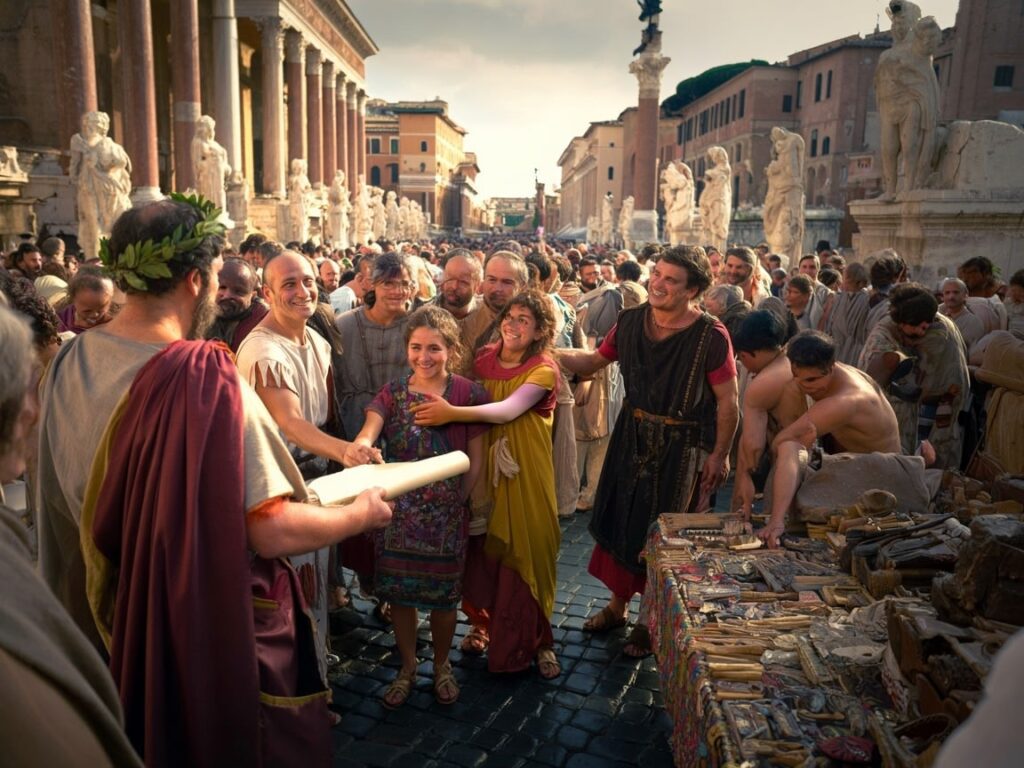
Cultural Assimilation and Social Integration
Ancient Rome handled immigration and integration with a focus on cultural assimilation as a key to maintaining social cohesion. One of the most significant tools for blending diverse populations was intermarriage. Laws like the Lex Canuleia, which allowed marriage between citizens and non-citizens, encouraged familial bonds that transcended ethnic divisions. These unions created networks of loyalty and belonging, rooting immigrant families firmly within Roman society.
Adoption and adaptation of customs from immigrant groups enriched Roman culture rather than threatening it. Romans were pragmatic in integrating foreign religious practices, culinary habits, dress styles, and festivals. This cultural exchange fostered a shared identity that was flexible yet distinctively Roman. Immigrants did not have to abandon their heritage completely; instead, their traditions often merged with Roman norms, producing a hybrid culture that strengthened social stability.
Cultural assimilation contributed to a shared Roman identity by creating common values and public life participation. Citizens and newly integrated immigrants participated in civic rituals, patronage systems, and local governance together. This inclusion minimized social friction and helped unify the empire’s vast population under one political and cultural framework.
The role of intermarriage combined with cultural adaptation demonstrates how Ancient Rome handled immigration and integration—not through exclusion but by weaving newcomers into the fabric of Roman life.
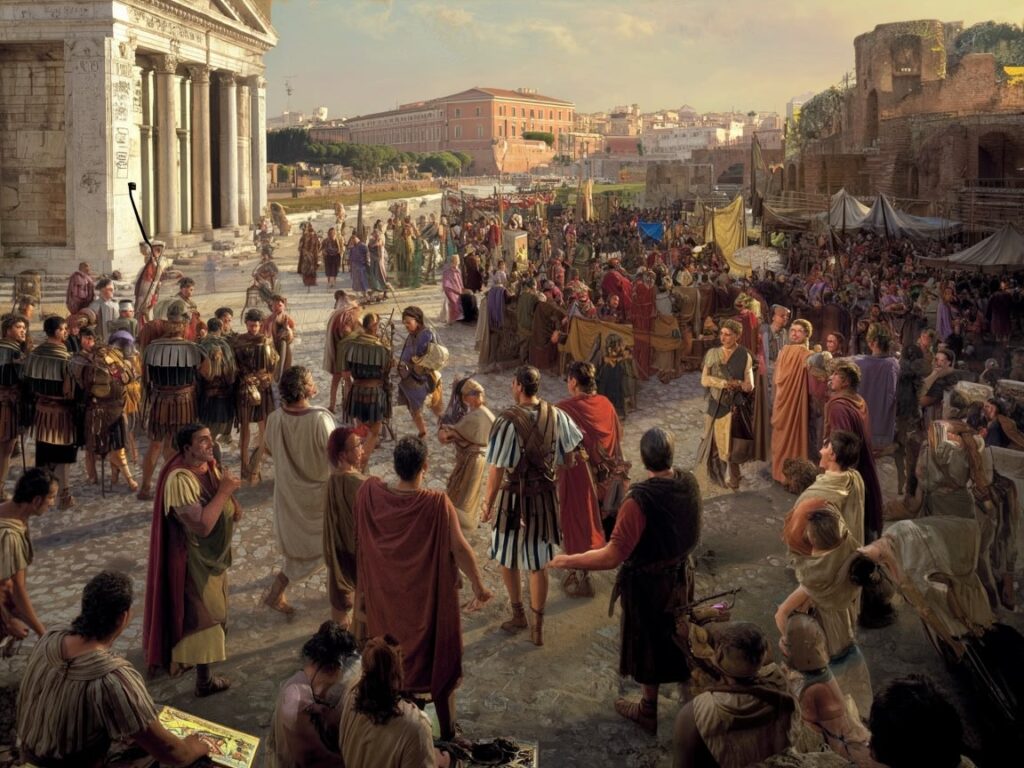
Economic and Military Roles of Immigrants
Economic integration was a key part of how Rome managed its diverse population. Immigrants found jobs in various industries such as agriculture, craftsmanship, trade, and urban labor. Many newcomers moved to rapidly growing cities, bringing skills that complemented local economies. The empire’s extensive system of roads and markets made it easier for immigrant workers to connect with job opportunities throughout Roman territories.
Economic Contributions of Immigrants
- Agriculture: Immigrants played a crucial role in sustaining agricultural estates by providing labor for farming activities.
- Craftsmanship: Skilled immigrants contributed to the production of goods and crafts, enhancing the quality and variety of products available in local markets.
- Trade: Immigrant merchants and traders facilitated commerce, introducing new trade routes and expanding economic networks.
- Urban Labor: In bustling cities, immigrants filled labor gaps in construction, services, and other sectors, driving urban growth.
Military Service as a Pathway for Immigrants
Military service was another important opportunity for immigrants seeking upward mobility and legal recognition within Roman society. Non-citizens, known as peregrini, had the chance to join auxiliary units that supported the legions. After completing their service—typically lasting 25 years—these soldiers were granted Roman citizenship, which served as a powerful incentive for loyalty and commitment.
This policy not only strengthened Rome’s military forces but also helped integrate foreigners into the civic community. By offering citizenship as a reward for military service, Rome encouraged immigrants to identify with the empire and its values.
The combination of economic participation and military inclusion had a significant impact on Rome’s growth and success. Immigrant labor sustained agricultural production and fueled urban development, while recruits bolstered the empire’s defenses and facilitated territorial conquests. Through these essential roles played by immigrants, Rome tapped into human resources that supported its long-lasting dominance in the ancient world.
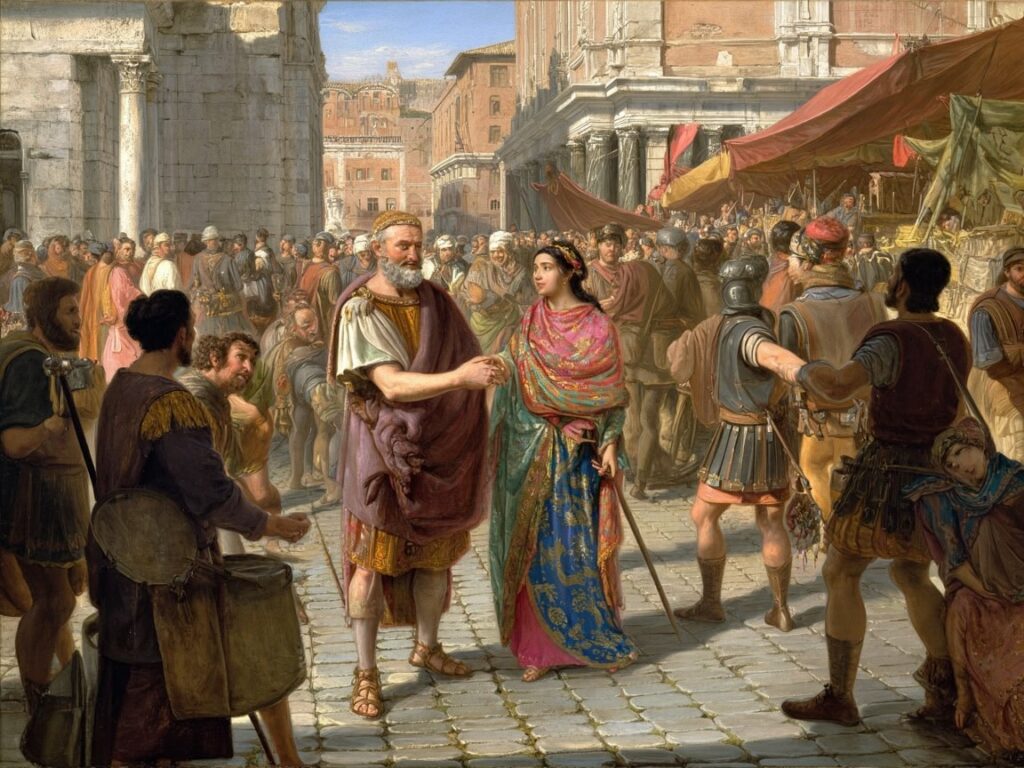
Legacy of Roman Immigration and Integration Policies
Ancient Rome’s approach to immigration has left a lasting impact, evident in its ability to maintain a multicultural empire for centuries. The inclusive policies implemented by the Romans played a crucial role in fostering political stability. Here’s how:
- Extending citizenship beyond ethnic lines, promoting loyalty through legal and social inclusion.
- Encouraging cultural assimilation without erasing distinct identities, creating a shared Roman identity that embraced diversity.
- Integrating immigrants into economic and military roles, strengthening the empire’s infrastructure and defense.
These strategies not only influenced later historical concepts of citizenship and multicultural statehood but also provided a model where political unity took precedence over ethnic homogeneity. Rome demonstrated how diverse populations could coexist under a single governance system through pragmatic laws and social structures.
The balance between diversity and unity established by the Romans serves as a critical example when examining How Ancient Rome Handled Immigration and Integration. It showcases an empire that thrived by turning differences into strengths rather than divisions.
Conclusion
Understanding how Ancient Rome handled immigration and integration sheds light on the complexities of managing diverse populations in an ancient multicultural society. The Roman model was not based on exclusion but on pragmatism and adaptability, recognizing that political unity and shared identity mattered more than ethnic origin.
Key takeaways from Rome’s approach include:
- Inclusive laws like Lex Canuleia encouraged social cohesion through intermarriage.
- Citizenship was extended as a practical tool for integrating newcomers, especially via military or civil service.
- Cultural assimilation was a two-way process, blending customs to create a stable, shared Roman identity.
- Border policies aimed to manage migration pragmatically, though challenges with tribes such as the Goths revealed limits.
The Roman example demonstrates that successful integration requires legal frameworks, cultural openness, and practical policies working in tandem. This historic experience remains relevant when considering the dynamics of immigration and integration today.
FAQs (Frequently Asked Questions)
How did Ancient Rome approach immigration and integration within its society?
Ancient Rome adopted an inclusive approach to immigration and integration, welcoming immigrants seeking refuge or opportunity. The society implemented laws and policies that promoted cultural assimilation, citizenship extension, and social cohesion to manage its diverse populations effectively.
What legal frameworks supported the integration of immigrants in Ancient Rome?
Roman law distinguished between citizens and peregrini (non-citizens), with mechanisms allowing immigrants to gain citizenship through military or government service. Laws like Lex Canuleia permitted intermarriage between citizens and non-citizens, facilitating political unity and legal inclusion beyond ethnic lines.
In what ways did cultural assimilation contribute to social stability in Ancient Rome?
Cultural assimilation in Ancient Rome involved intermarriage, adoption of customs from immigrant groups, and blending diverse peoples into a shared Roman identity. This process fostered social cohesion and stability by creating a unified society despite its multicultural composition.
What roles did immigrants play in the economic and military spheres of Ancient Rome?
Immigrants were actively included in economic activities and labor markets across the empire. Military service served as a vital pathway for immigrants to achieve citizenship and social mobility, contributing significantly to Rome’s economic success and territorial expansion.
How did Ancient Rome manage border security and challenges posed by migrating tribes like the Goths?
Rome employed natural barriers rather than extensive walls for border defense, using strategies such as breaking migrating groups into smaller units and disarming them to maintain control. However, managing large-scale migrations presented challenges, exemplified by conflicts with tribes like the Goths after 376 AD.
What is the legacy of Roman immigration and integration policies on later societies?
Roman inclusive policies had long-term effects on empire longevity and governance, influencing later concepts of citizenship and multicultural statehood. The balance Rome achieved between diversity and unity serves as a historical example of managing multicultural societies pragmatically.

